Experiencing winter in Iceland offers an unforgettable and unique perspective on this spectacular country. While most travelers flock to Iceland during the summer months of midnight sun, those who travel during the winter months discover a magical landscape blanketed with snow and ice. Visiting during the low season also allows you to see the stunning northern lights of the aurora borealis.
While winter in Iceland can be unpredictable, with sunny skies one day and biting wind storms the next, there are many tempting reasons to consider visiting Iceland during the off-season winter months.
Discover an ethereal winter wonderland
Iceland’s pure beauty takes on a fairytale-like quality during the winter. Snow-capped mountains, frozen waterfalls, and icy lava formations transform the landscape into a pristine wonderland. The spectacular contrast of the dark, volcanic terrain against the glistening snow offers unique photo opportunities you’d never find in the summer.
Witness the northern lights
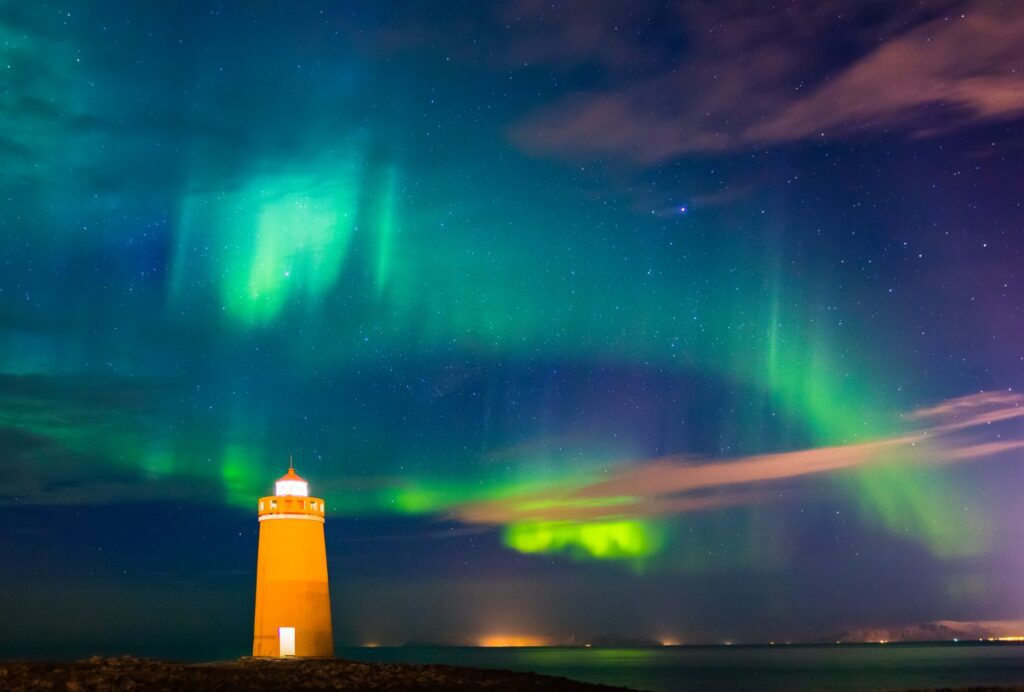
One of Iceland’s biggest draws for winter travelers is witnessing the mesmerizing dance of the northern lights (aurora borealis) across the Arctic skies. Iceland’s northern location and long, dark winter nights provide excellent conditions for spotting this celestial phenomenon. A road trip allows you to chase the lights wherever they appear, or opt for a guided tour specializing in spotting the northern lights.
Experience fewer crowds and lower costs
Compared to the summer season, when the island has the most significant influx of tourists (and consequently, the highest prices), the winter months from September to May see fewer visitors. The low season allows you to explore Iceland’s iconic attractions, like the Golden Circle and the Blue Lagoon, with fewer crowds, giving you more peace and solitude. January to May brings the least amount of tourists to Iceland, and the lower prices from flights, car rentals, accommodation, and tours reflect this.
Many travelers consider December the best winter month to experience Iceland due to the festive spirit of Christmas markets, the fairy lights and overall holiday atmosphere, and excellent conditions to see the aurora borealis.
Cozy up with cultural experiences
Winter in Iceland is a fabulous opportunity to immerse yourself in the country’s rich and creative culture. It’s the perfect season to cozy up in traditional Icelandic cottages, sample the hearty local cuisine, and relax in numerous geothermal pools while taking in the snowy surroundings. Iceland’s winter season provides numerous chances to experience the warmth and openness of Icelandic hospitality.
Explore a range of adventures
Winter road trips in Iceland offer a wide range of adventures, from snowmobiling on glaciers to ice cave exploration and glacier hiking. The best news is that you don’t have to go far to experience the best of Iceland in the winter. It’s all possible with day trips from the capital city of Reykjavik.
Self-drive or take a tour
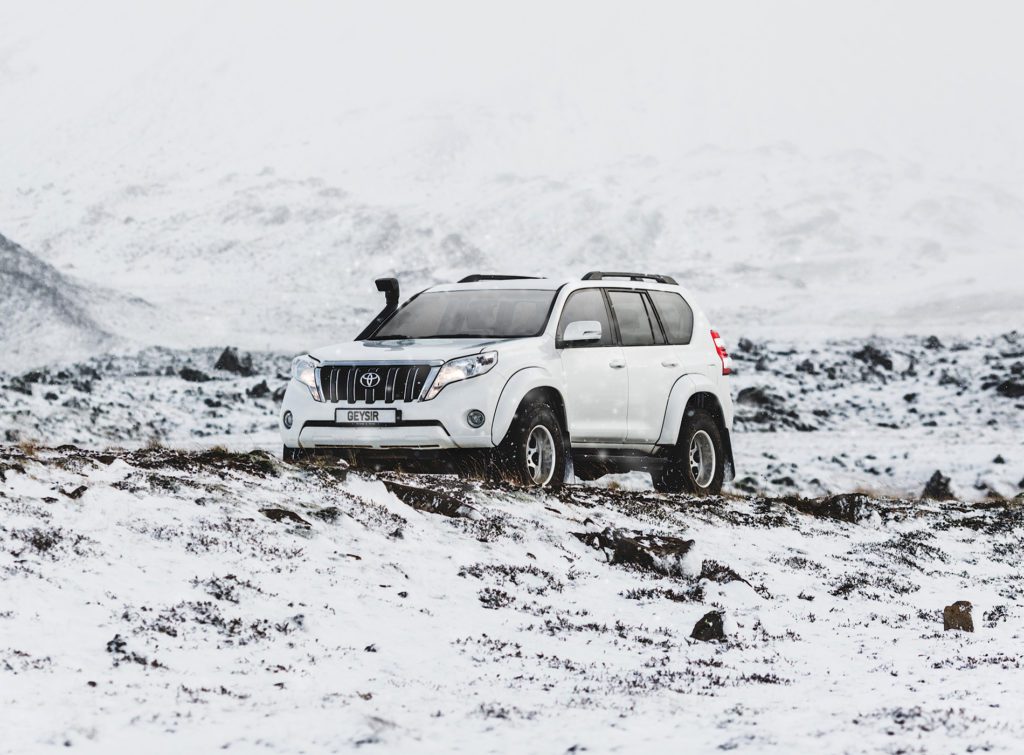
While it’s easy to drive to these day trip destinations in summer road conditions unless you’re experienced with winter driving, taking guided tours is recommended for safety and convenience. Each trip offers unique wonders and opportunities to witness the northern lights, making them fantastic visitor encounters.
Whether you plan to self-drive for your winter day trips or go with local tour groups, you’ll have plenty to keep you busy as you explore Iceland this winter. Here at Geysir, we can arrange the best car rental Iceland offers. With a vast variety of vehicles that cover every budget, we have what you need for your winter driving holiday.
Are you ready to head out and start exploring Iceland’s incredible winter paradise? Let’s Go!
The three best day trips from Reykjavik this winter
The Golden Circle
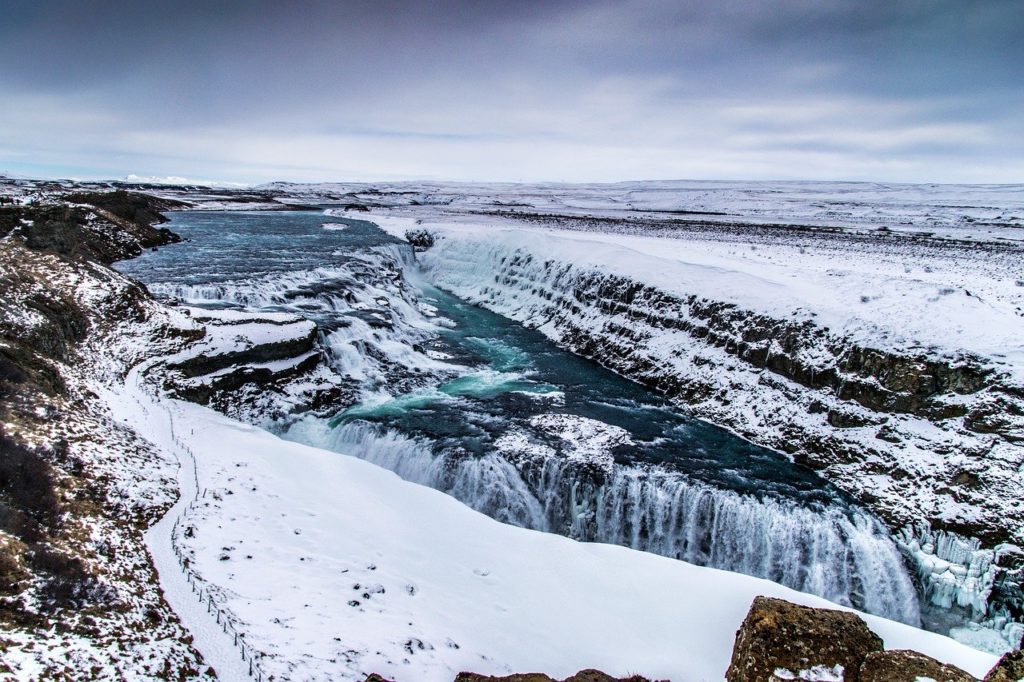
The Golden Circle includes three iconic attractions that showcase Iceland’s most incredible natural wonders: Thingvellir National Park, Geysir Geothermal Area, and Gullfoss Waterfall.
A Unesco World Heritage site since 2004, Thingvellir National Park is one of the most visited sites in Iceland. Explore the historic Thingvellir and be amazed by the dramatic gorges and rifts formed by the presence of the Atlantic Ocean Ridge coursing through Iceland.
In the Geysir Geothermal Area, the original geysir itself is no longer active. However, you can witness the nearby Strokkur geyser erupting an astonishing 15-20 meters (49-65 feet) every 6-10 minutes. Many other geothermal attractions are nearby, including hot springs, mud pools, and fumaroles.
Have you ever dreamed of going snowmobiling across Europe’s second-largest glacier? This is your chance, as the Golden Circle area also includes the Icelandic Highlands and Langjökull Glacier.
Or would you like to explore underwater? The Silfra Fissure is the only place where you can snorkel between the tectonic plates—the American and the Eurasian—separating two continents. And yes, you can do this in the winter as the water temperature stays constant (and very cold!) 2–4 °C (36–39 °F).
The Golden Circle is named after the majestic Gullfoss Waterfall (Gullfoss means Golden Waterfall in Icelandic), one of Iceland’s most beautiful waterfalls. You don’t want to miss it, but do be careful. The path can be very icy in the winter months, but there are still plenty of places to stand in awe and admire this gorgeous force of nature.
The Golden Circle area offers excellent northern lights viewing opportunities during the winter. If you’re on a tour, many guests combine the Golden Circle with a northern lights hunt.
Winter Driving: The main roads to the Golden Circle attractions are generally well-maintained, but they can be icy and snow-covered in winter. If you have experience with winter driving, this route is usually safe, but if you have any hesitation, private or group tour options are plentiful and stress-free.
Distance from Reykjavik: The Golden Circle is relatively close, with some main sites about 40-50 kilometers (25-31 miles) from Reykjavik. However, the total circular route is around 250-300 km (155-186 miles), and an entire loop of purely driving time would take at least four hours of travel. With so many impressive points of interest, the Golden Circle is best experienced on a full-day adventure.
The South Coast
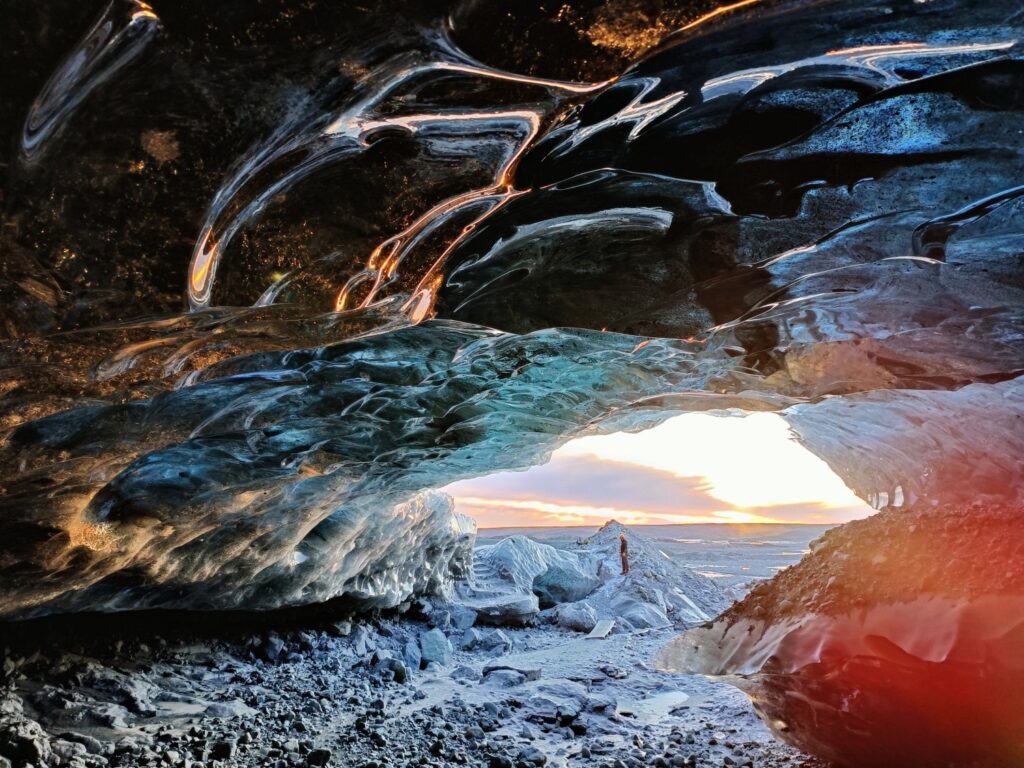
The South Coast of Iceland is a diverse and captivating destination for winter travelers. This area boasts stunning black sand beaches, several glaciers, and two of Iceland’s most majestic waterfalls, Seljalandsfoss and Skogafoss. Seljalandsfoss, in particular, is known for its rare feature—you can walk behind the cascading water curtain for a breathtaking view. Powerful Skogafoss, on the other hand, is known for the staircase that allows you to climb for panoramic views.
Have you ever tried ice climbing? A tour of the Solheimajokull glacier offers this thrilling opportunity. The adventure is made even more daring with the knowledge that below the glacier is an active volcano named “Katla.” Or perhaps you’d like to explore within by joining a cave tour to explore the ice cave of Katla and the Myrdalsjokull glacier?
The South Coast is also an excellent location for northern lights viewing, especially in areas with minimal light pollution.
Winter Driving: Winter conditions can be challenging on the South Coast due to ice and snow. Taking a guided tour is highly recommended, as experienced drivers with appropriate vehicles are necessary.
Distance from Reykjavik: The South Coast day trip covers a long distance, approximately 120-150 kilometers (75-93 miles), and you should allow for a full-day adventure.
The Blue Lagoon and Reykjanes Peninsula
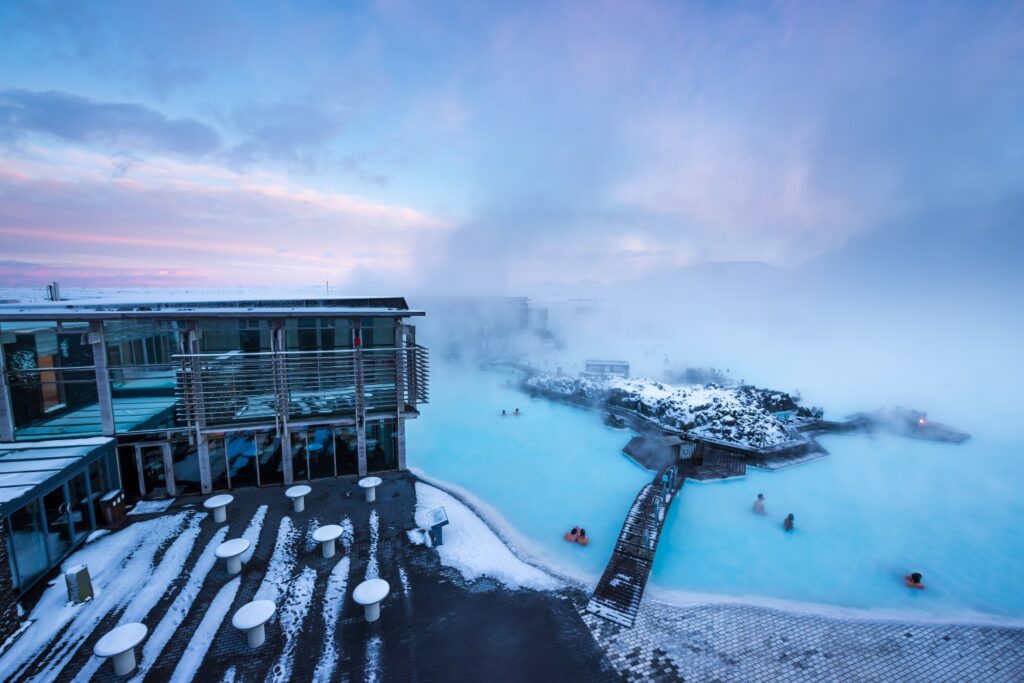
The Blue Lagoon provides relaxation and wellness combined with the warmth of geothermal waters. At the same time, the Reykjanes Peninsula unleashes the raw power of Iceland’s geological forces and the stark beauty of its coastal landscapes.
A world-famous geothermal spa with milky-blue waters with a consistent 102 F (39 C) year-round water temperature, the Blue Lagoon is Iceland’s #1 luxury spa. You could spend the better part of the day soaking in the warm waters and enjoying the spa facilities, but you’d miss exploring the Reykjanes Peninsula.
This peninsula is a geologically active area with rugged, barren landscapes, lava fields, Gunnuhver hot springs, and the Bridge Between Continents, where you can walk between tectonic plates.
While the Blue Lagoon itself isn’t ideal for northern lights viewing due to light pollution, the auroras are often spotted in the dark and remote areas of the Reykjanes Peninsula, especially on clear winter nights, so plan your day accordingly.
Winter Driving: Roads to the Blue Lagoon are typically well-maintained. The weather can still be harsh, but it’s generally safe to drive. The Reykjanes Peninsula is accessible by car, but conditions may vary.
Distance from Reykjavik: The Blue Lagoon and Reykjanes Peninsula are relatively close, about 45 kilometers (28 miles) from Reykjavik.
While winter road trips in Iceland require careful planning, including appropriate clothing and footwear, excellent winter driving skills, reliable vehicles, and knowledge of weather conditions, the rewards are well worth the effort. The sense of adventure and opportunity to witness Iceland’s beauty in its frozen splendor make a winter road trip an extraordinary and unforgettable holiday.
Back